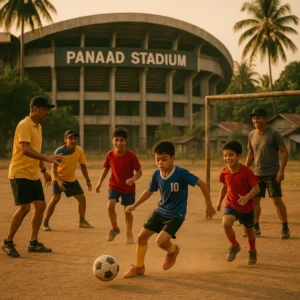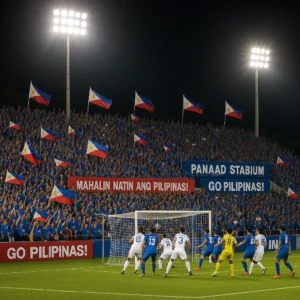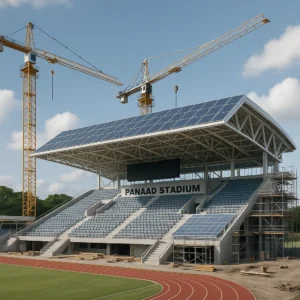The Stadium That Sparked a Movement
Panaad Stadium, located in Bacolod City, Negros Occidental, is more than a sports venue. It stands as a cultural landmark that helped shape the rise of football in the Philippines — especially in the Visayas.
While many recognize its name from local matches or the Panaad sa Negros Festival, few know the deeper truths behind its origins and impact.
Let’s explore the hidden stories that made Panaad a game-changer in Philippine football history.
Built with a Vision for Regional Pride
Panaad Stadium was not built overnight — and not just for football.
Why it matters:
-
The project was designed as a multi-use venue within the Panaad Park and Sports Complex
-
It was part of a larger initiative to promote regional sports development outside Metro Manila
-
Local leaders wanted to bring national attention to Visayan talent and support grassroots programs
At a time when most investments went to Luzon, this stadium was a bold statement from the Negros Occidental government — putting Bacolod firmly on the sporting map.
Panaad Stadium: Key Construction Milestones in Philippine Football
A Catalyst for Football in the Visayas
While basketball ruled the nation, Panaad quietly grew football from the ground up.
How it changed the game:
-
It became the home of Negros Occidental Football Association (NOFA) activities
-
Regular use for school and youth tournaments helped nurture local talent
-
It inspired the formation of clubs like Ceres-Negros FC, later dominating national leagues
-
Its location allowed Visayan players to train and play without relocating to Manila
This created a decentralized path for players from regions often overlooked in mainstream sports.

Panaad’s International Debut Made History
In 2005, Panaad hosted the Southeast Asian (SEA) Games football tournament.
Why it was historic:
-
It was the first time a major international football event was held in Bacolod City
-
Matches drew huge crowds, placing the city and the stadium under the global spotlight
-
The event proved that regional venues could handle international standards
-
It left a lasting impression on the Asian Football Confederation (AFC)
For many locals, it was the first time they saw international teams compete live — right in their hometown.

Panaad Stadium 1998: Why That Year Changed Philippine Sports
Designed with Community in Mind
Unlike most large stadiums, Panaad was built to be part of everyday life.
Community-driven design features:
-
The stadium is part of the Panaad Park, which includes jogging paths, picnic areas, and cultural pavilions
-
It is used for school graduations, local concerts, and even government programs
-
The design allows for open access outside of major events, making it a living space, not a closed facility
This model blends urban space with public utility, encouraging foot traffic and local pride.
Its Legacy Continues to Shape Philippine Football
Even decades later, the origins of Panaad still influence football’s growth across the nation.
Lasting contributions:
-
Home turf of legendary club Ceres-Negros FC, now United City FC
-
Regular venue for PFL (Philippine Football League) matches
-
Hosts the annual NOFA Cup, attracting youth teams nationwide
-
Serves as a blueprint for provincial stadium development
More than a structure, Panaad proved that football can thrive beyond the capital — and that local communities can lead national sports progress.
Frequently Asked Questions
Where is Panaad Stadium located?
It’s in Barangay Mansilingan, Bacolod City, within the Panaad Park and Sports Complex.
What does ‘Panaad’ mean?
“Panaad” is a Visayan word meaning “vow” or “promise.” The stadium was part of a vow to promote local development.
Is the stadium used only for football?
No. It also hosts track and field, concerts, festivals, and civic events.
Can tourists visit when there are no events?
Yes. The park and surrounding areas are open for walking, jogging, and sightseeing.
What is the best time to visit Panaad Stadium?
During the Panaad sa Negros Festival in April or during football season from March to November.
The Heartbeat of Bacolod Football
The story of Panaad is not just about matches won or events hosted. It’s about a promise — to the region, the youth, and the sport.
From its origin story to its cultural role, Panaad Stadium continues to uplift Philippine football, one goal, one game, and one local hero at a time.
Whether you’re a tourist, a fan, or just curious about local sports, visiting Panaad means stepping into the roots of something greater.


